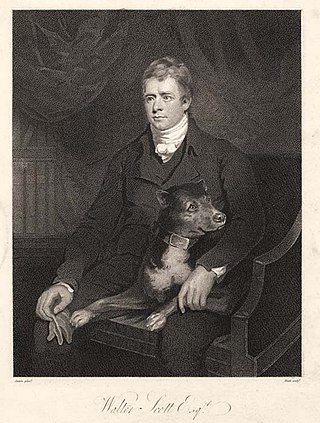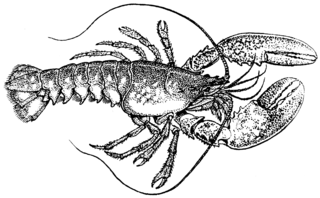
Robin Hood is a legendary heroic outlaw originally depicted in English folklore and subsequently featured in literature and film. According to legend, he was a highly skilled archer and swordsman. In some versions of the legend, he is depicted as being of noble birth, and in modern retellings he is sometimes depicted as having fought in the Crusades before returning to England to find his lands taken by the Sheriff. In the oldest known versions, he is instead a member of the yeoman class. Traditionally depicted dressed in Lincoln green, he is said to have robbed from the rich and given to the poor.

Joseph Ritson was an English antiquary who is well known for editing the first scholarly collection of Robin Hood ballads (1795). After a visit to France in 1791, he became a staunch supporter of the ideals of the French Revolution. He was also an influential vegetarianism activist. He is also known for his collections of English nursery rhymes, such as "Roses Are Red" and "Little Bo-Peep", in Gammer Gurton's Garland or The Nursery Parnassus, published in London by Joseph Johnson.

The Child Ballads are 305 traditional ballads from England and Scotland, and their American variants, anthologized by Francis James Child during the second half of the 19th century. Their lyrics and Child's studies of them were published as The English and Scottish Popular Ballads. The tunes of most of the ballads were collected and published by Bertrand Harris Bronson in and around the 1960s.

Thomas Percy was Bishop of Dromore, County Down, Ireland. Before being made bishop, he was chaplain to George III of the United Kingdom. Percy's greatest contribution is considered to be his Reliques of Ancient English Poetry (1765), the first of the great ballad collections, which was the one work most responsible for the ballad revival in English poetry that was a significant part of the Romantic movement.

The Reliques of Ancient English Poetry is a collection of ballads and popular songs collected by Bishop Thomas Percy and published in 1765.
Lord Lovel is number 75 of the ballads anthologized by Francis James Child during the second half of the 19th century, and exists in several variants. This ballad is originally from England, originating in the Late Middle Ages, with the oldest known versions being found in the regions of Gloucestershire, Somerset, Worcestershire, Warwickshire, and Wiltshire.

Robin Hood's Death, also known as Robin Hoode his Death, is an Early Modern English ballad of Robin Hood. It dates from at the latest the 17th century, and possibly originating earlier, making it one of the oldest existing tales of Robin Hood. It is a longer version of the last six stanzas of A Gest of Robyn Hode, suggesting that one of the authors was familiar with the other work and made an expansion or summary of the other, or else both were drawing from a lost common tale. The surviving version in the Percy Folio is fragmentary, with sections missing. A more complete but later version is from the middle of the 18th century, and is written in modern English. Both versions were later published by Francis James Child as Child ballad #120 in his influential collection of popular ballads.
King Edward the Fourth and a Tanner of Tamworth is a ballad first found in the Child Ballad collection, number 273. A ballad of this title was licensed in 1564. Versions of this ballad also exist outside the Child collection. Additional copies can be found at the British Library, the University of Glasgow Library, and the Pepys Library at Magdalene College. These ballads dates, by estimation of the English Short Title Catalogue, range from the early seventeenth century to as late as 1775. The ballad is most recognized by its opening line: "In summer time, when leaves grow green." Child describes the appeal of this ballad to be centered on the chance meeting with a King, which is also a recurring theme in tales of Robin Hood.

Minstrelsy of the Scottish Border is an anthology of Border ballads, together with some from north-east Scotland and a few modern literary ballads, edited by Walter Scott. It was first published by Archibald Constable in Edinburgh in 1802, but was expanded in several later editions, reaching its final state in 1830, two years before Scott's death. It includes many of the most famous Scottish ballads, such as Sir Patrick Spens, The Young Tamlane, The Twa Corbies, The Douglas Tragedy, Clerk Saunders, Kempion, The Wife of Usher's Well, The Cruel Sister, The Dæmon Lover, and Thomas the Rhymer. Scott enlisted the help of several collaborators, notably John Leyden, and found his ballads both by field research of his own and by consulting the manuscript collections of others. Controversially, in the editing of his texts he preferred literary quality over scholarly rigour, but Minstrelsy of the Scottish Border nevertheless attracted high praise from the first. It was influential both in Britain and on the Continent, and helped to decide the course of Scott's later career as a poet and novelist. In recent years it has been called "the most exciting collection of ballads ever to appear."
"King Arthur and King Cornwall" is an English ballad surviving in fragmentary form in the 17th-century Percy Folio manuscript. An Arthurian story, it was collected by Francis James Child as Child Ballad 30. Unlike other Child Ballads, but like the Arthurian "The Boy and the Mantle" and "The Marriage of Sir Gawain", it is not a folk ballad but a professional minstrel's song. It is notable for containing the Green Knight, a character known from the medieval poems The Greene Knight and the more famous Sir Gawain and the Green Knight; he appears as "Bredbeddle", the character's name in The Greene Knight.

"The Dowie Dens o Yarrow", also known as "The Braes of Yarrow" or simply "Yarrow", is a Scottish border ballad. It has many variants and it has been printed as a broadside, as well as published in song collections. It is considered to be a folk standard, and many different singers have performed and recorded it.
"The Battle of Otterburn" is a Scottish ballad, catalogued as Child Ballad 161, Roud 3293. It is an account of the Scottish victory at the Battle of Otterburn in 1388. This battle also inspired "The Ballad of Chevy Chase", an English version, but the Scottish version is more historically accurate.
The Squire of Low Degree, also known as The Squyr of Lowe Degre, The Sqyr of Lowe Degre or The Sqyr of Lowe Degree, is an anonymous late Middle English or early Modern English verse romance. There is little doubt that it was intended to be enjoyed by the masses rather than the wealthy or aristocratic sections of society, and, perhaps in consequence of this, it was one of the better-known of the English romances during the Elizabethan and Jacobean eras, and again in the 19th century. There are three texts of the poem: it was printed by Wynkyn de Worde c. 1520 under the title Undo Youre Dore, though only fragments totalling 180 lines survive of this book; around 1555 or 1560 another edition in 1132 lines was produced by William Copland; and a much shorter version, thought to have been orally transmitted, was copied into Bishop Percy's Folio Manuscript around the middle of the 17th century. The precise date of the poem is unknown, estimates varying from 1440 to 1520, but Henry Bradley's date of c. 1475 has been quite widely adopted. Standing as it does at the very end of the English Middle Ages it has been called "a swan song of the romance".
Greysteil ("Graysteel") is a medieval poem popular in 16th century Scotland. Set to music, it was performed for James IV of Scotland and James V of Scotland. The poem was also called Syr Egeir and Syr Gryme, Eger and Grime being the names of the two knights who fight Greysteil and whose contrasted virtues are the poem's real subject.

Northumberland Betrayed By Douglas is Child ballad 176. It has a Roud Folk Song Index number of 4006. It tells of the Seventh Earl of Northumberland fleeing to Scotland.
Robin Hood and Allan Dale is a traditional English ballad, catalogued as Child Ballad No. 138 and as Roud Folk Song Index No. 3298.

"The Crabfish" is a ribald humorous folk song of the English oral tradition. It dates back to the seventeenth century, appearing in Bishop Percy's Folio Manuscript as a song named "The Sea Crabb" based on an earlier tale. The moral of the story is that one should look in the chamber pot before using it.
Of Arthour and of Merlin, also known as just Arthur and Merlin, is an anonymous Middle English verse romance giving an account of the reigns of Vortigern and Uther Pendragon and the early years of King Arthur's reign, in which the magician Merlin plays a large part. It can claim to be the earliest English Arthurian romance. It exists in two recensions: the first, of nearly 10,000 lines, dates from the second half of the 13th century, and the much-abridged second recension, of about 2000 lines, from the 15th century. The first recension breaks off somewhat inconclusively, and many scholars believe this romance was never completed. Arthur and Merlin's main source is the Estoire de Merlin, a French prose romance.
A Gest of Robyn Hode is an example of a Middle English minstrel ballad, in which the verses are grouped in quatrains with an abcb rhyme scheme. Based upon evidence contained within the work, it was probably compiled during the early 15th century as a narrative sequence of early 14th century Robin Hood tales.









